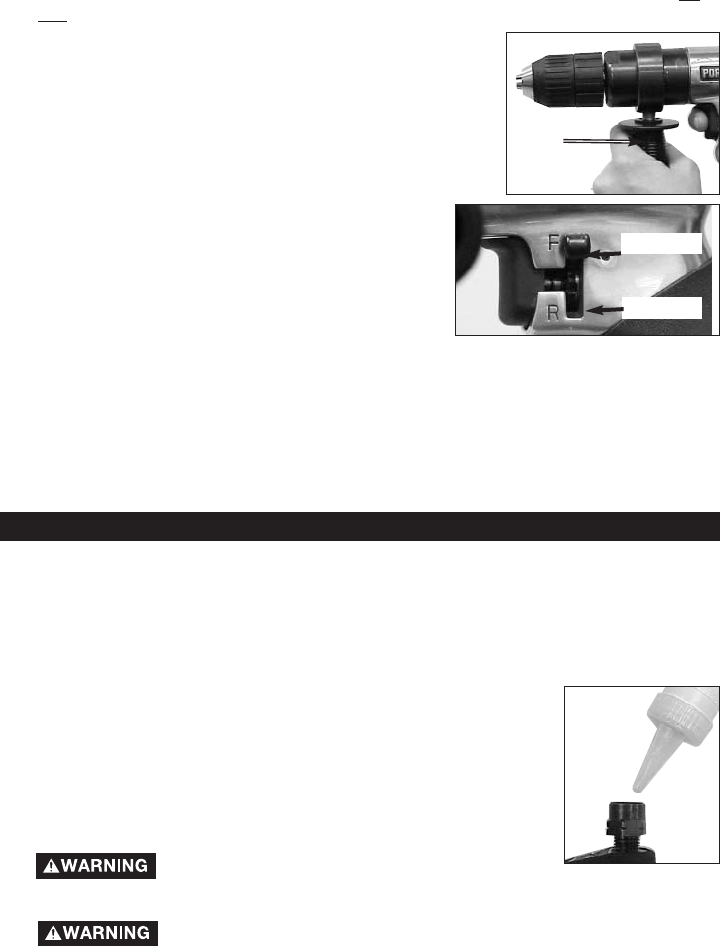
6- ENG
D22722
MAINTENANCE
To use:
●
Turn air compressor on and allow air tank to fill.
●
Set the air compressor’s regulator to 90 PSI. This tool operates at a maximum 90
PSI pressure.
●
This tool has a stabilizer handle (C). Loosen stabilizer
handle and rotate to desired position and tighten.
●
Place the tool in reverse or forward position.
●
Position drill bit at the point to be drilled and depress the
trigger.
●
Always disconnect air supply when changing drill bits.
●
Release trigger to stop tool.
●
When job is complete, turn the air compressor off
and store as described in the air compressor
operator manual.
Tips
●
Locate the position of the hole to be drilled. Mark
that position with a center punch. This provides a good seat for the drill bit point
and keeps the drill from moving from the mark. Never apply a spinning drill bit to the
work.
●
Apply just enough pressure to keep the drill cutting. Do not force it. Too much
pressure may cause the drill to break.
●
Withdraw the drill several times to clear the cuttings when drilling deep holes.
Forward
Reverse
Lubrication
Air tools require lubrication throughout the life of the tool. The air motor and bearing uses
compressed air to power the tool. Because moisture in compressed air will rust the air
motor, you must lubricate the motor daily. An inline oiler is recommended.
To lubricate the air motor manually:
●
Disconnect the tool from the air supply holding it so the air inlet
faces up.
●
Hold the trigger in and place one to two drops of air tool oil in the
air inlet Depressing the trigger helps circulate oil in the motor.
NOTE: Use SAE #10 weight oil if air tool oil is not available.
●
Connect the tool to an air source, cover the exhaust end with a
towel and run for a few seconds.
Any excess oil in the motor is immediately
expelled from the exhaust port. Always direct exhaust port
away from people or objects.
Failure to lubricate the tool at the air inlet will void your
warranty.
C










